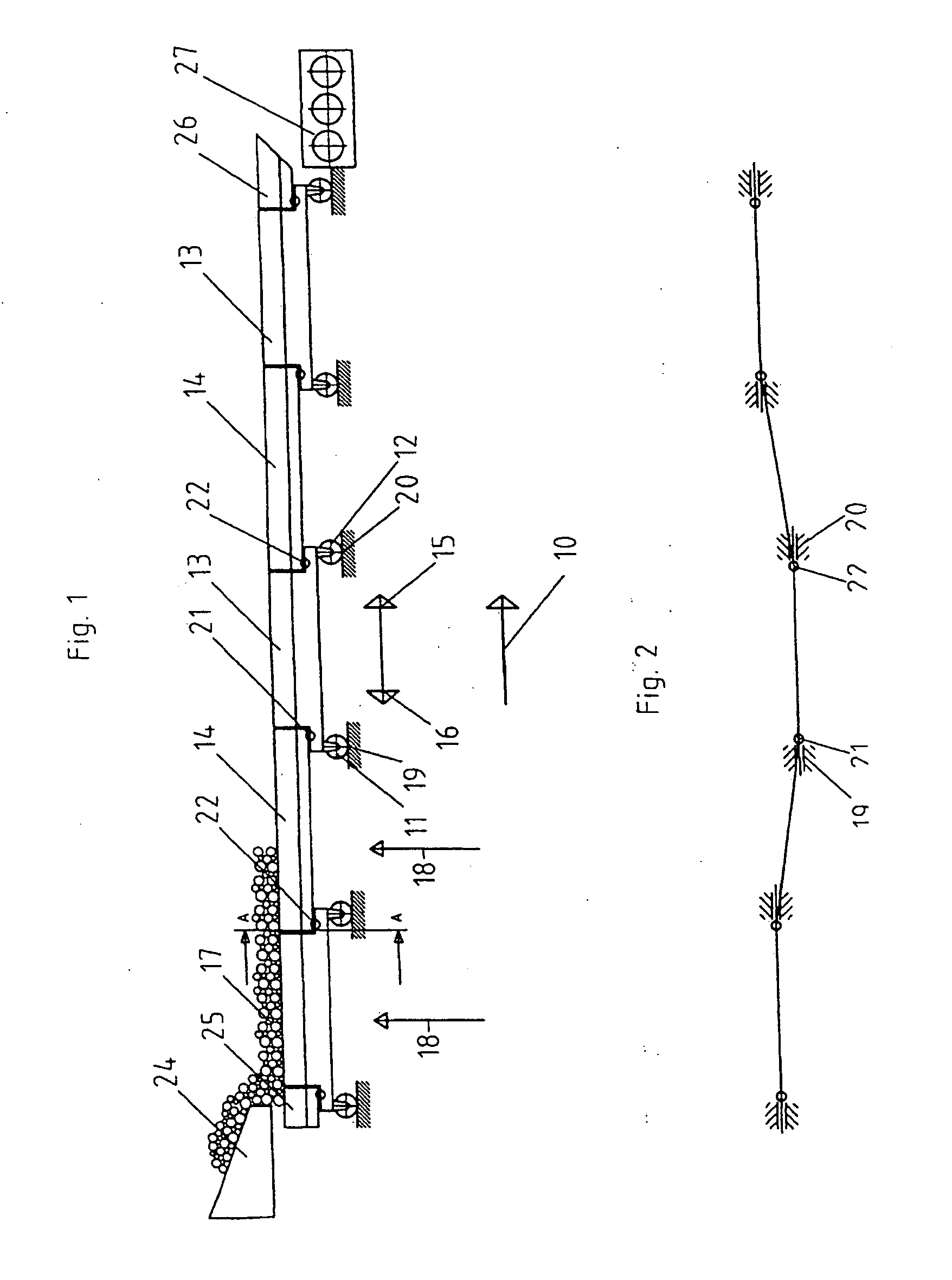Bulk-Material Cooler for Cooling Hot Material to be Cooled
a technology of hot material and cooler, which is applied in the direction of furniture, lighting and heating equipment, transportation and packaging, etc., can solve the problems of reducing the service life of the grate cooler, affecting the thermal efficiency of such types of grate cooler, and being relatively expensive to seal off the cooling gra
- Summary
- Abstract
- Description
- Claims
- Application Information
AI Technical Summary
Benefits of technology
Problems solved by technology
Method used
Image
Examples
Embodiment Construction
[0025] The bulk material cooler according to the invention will first be explained with reference to the exemplary embodiment in FIG. 1, in which the cooling grate, viewed over the length and over the width of the cooler, is assembled from multiple modules, the modules in each row arranged in series in the conveying direction 10 of the material to be cooled being coupled together. Each longitudinal row of cooling grate modules, of which one longitudinal row can be seen in FIG. 1, is assembled from carrier modules 13 supported bilaterally on support rollers 11, 12 alternating with connecting modules 14, the latter with no support rollers of their own being hitched onto the carrier modules 13.
[0026] The rows of cooling grate modules extending over the considerable length of the bulk material cooler are capable of controlled movement independently of one another between a forward stroke position 15 in the conveying direction of the material to be cooled and a return stroke position 16...
PUM
| Property | Measurement | Unit |
|---|---|---|
| Length | aaaaa | aaaaa |
| Width | aaaaa | aaaaa |
| Area | aaaaa | aaaaa |
Abstract
Description
Claims
Application Information
 Login to View More
Login to View More - R&D
- Intellectual Property
- Life Sciences
- Materials
- Tech Scout
- Unparalleled Data Quality
- Higher Quality Content
- 60% Fewer Hallucinations
Browse by: Latest US Patents, China's latest patents, Technical Efficacy Thesaurus, Application Domain, Technology Topic, Popular Technical Reports.
© 2025 PatSnap. All rights reserved.Legal|Privacy policy|Modern Slavery Act Transparency Statement|Sitemap|About US| Contact US: help@patsnap.com



